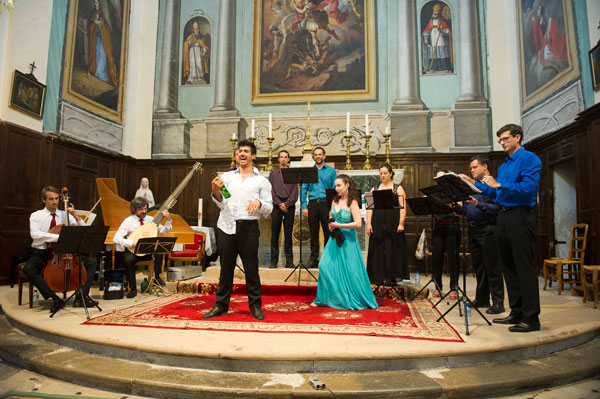
Ensemble Baroque de Monaco ©YesICannes.com
At the 29th edition of the Festival de Musique Ancienne de Callas, the Ensemble Baroque de Monaco has marvelously performed Henry Purcell’s The Fairy Queen, a charming opera that has delighted the music lovers.
For 29 years, the Festival de Musique Ancienne de Callas has been bringing together outstanding ensembles of performers exploring the vast repertoire of Baroque works, written from the Renaissance to the Classical period. For the 2019 edition, Françoise Barre, President of the Festival, took us into the world of Baroque opera, which privileges emotion, perception, inconstancy and paradox, for a festival of ancient music with ancient instruments. Henry Purcell‘s The Fairy Queen, performed by the Ensemble Baroque de Monaco, has thrilled the large audiences under the vaults of the church of Figanières.
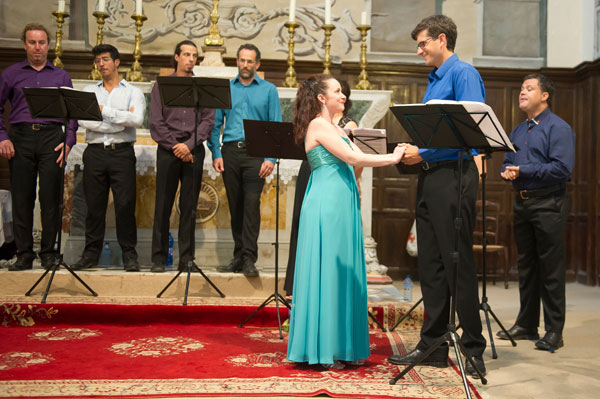
©YesICannes.com
A very theatrical show
Between sea and mountains, in the heart of the Var and Provence, the charming village of Callas offers the stones of its houses cascading to the light of the South, so much loved by poets and painters. For 29 years, in July, the village has been spreading its charms, its gastronomy and its privileged quality of life to enchant music lovers of the Festival de Musique Ancienne de Callas (Festival of Ancient Music of Callas), presided over by Mrs. Françoise Barre, also Artistic Director.
The Church Saint-Michel de Figanières hosted on Sunday 21st July the 10 solo singers and 9 musicians from the Ensemble Baroque de Monaco under the direction of the conductor and counter tenor Matthieu Peyrègne who masterfully performed The Fairy Queen, a very theatrical show, full of emotions, humor and good humor, played by higly talented soloists.
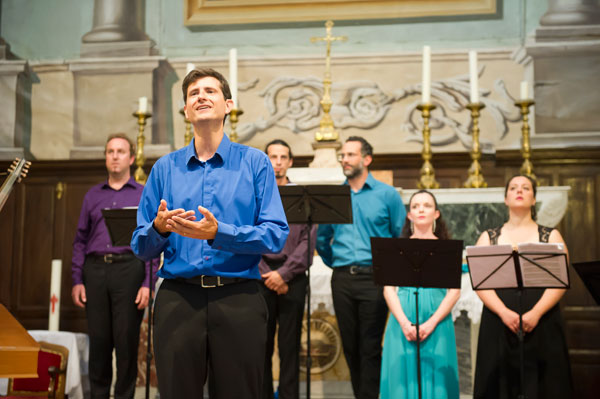
Matthieu Peyrègne ©YesICannes.com
Magic and wonder of Baroque opera
In Italy, end of the Renaissance: the Baroque period emerges. Princes and intellectuals are supporting the opera. This new genre privileges emotion, perception, inconstancy and paradox and sings the affects and aesthetics of ancient tragedy. The opera first drew its inspiration from Italian madrigals, but also from masquerades, court ballets, intermezzi, and other court performances mixing singing with several other arts. Baroque opera often combines tragic and comical aspects, even burlesque, involves magic and marvelous, multiplies the characters and musical genres.
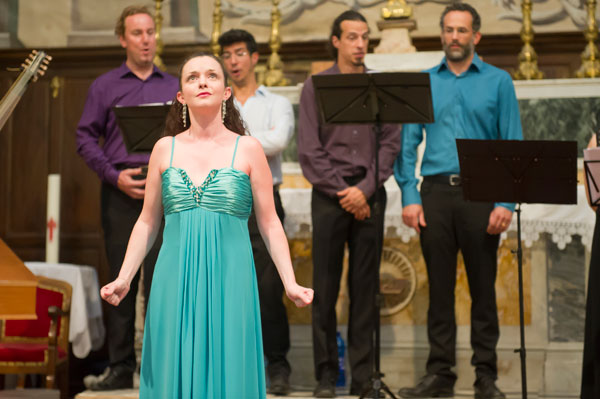
©YesICannes.com
The Fairy Queen by Henry Purcell
Written in 1692, The Fairy Queen was Purcell’s greatest success during his lifetime.The work is inspired by Shakespeare‘s A Midsummer Night’s Dream, which has been cut from a part of the text, with “masks”, a name that describes musical interludes combining music, songs, ballets and grandiose scenography. With exquisite delicacy and inexhaustible inventiveness, The Fairy Queen is an ode to eternal love. A “so British” performance that has delighted many audiences by the verve, the touch of magic and joie de vivre he broadcast.
The Fairy Queen was played in five acts, starring the Fairy Queen, an important figure in A Midsummer Night’s Dream. The Fairy Queen is Titania, she is upset by the jealousy of her husband, Oberon, the King of the Elves.

©YesICannes.com
Act 1: the fairies and the drunken poet
Fleeing Oberon’s jealousy, Titania finds the fairies (sopranos) in the forest, dancing and singing for their queen. A drunk poet (bass) arrives, who sings: “Fill my bottle, let my bottle be full!” The fairies play with him, his drunkenness, drag him into a game of colin-maillart and pinch him until he undertakes to write a poem to the glory of the fairies. It will be a midsummer night’s dream…

©YesICannes.com
Act 2: four spirits from heaven appear
In the moonlight, Titania comes into a clearing followed by fairies dancing as the birds sing. The choir sings: “Everyone has to sing for the Fairy Queen”. Then, change of atmosphere: four spirits from the sky appear in turn. First, the Night (soprano), then the Mystery (soprano), the Secret (counter-tenor) and finally the Sleep (bass). Everyone sings while Titania falls asleep. Good night Titania!

©YesICannes.com
Act 3: the fairies sing love
While Titania is sleeping, the fairies sing about love: “Love is a sweet passion!” (soprano). In her sleep, Titania makes a crazy dream – the midsummer night’s dream – including a comic love scene between the shepherdess Mopsa (sung by a man: Matthieu Peyrègne) and the shepherd Corydon (bass). Both are frolicking in a most hilarious dream, which turns to madness, the madness of a summer night!
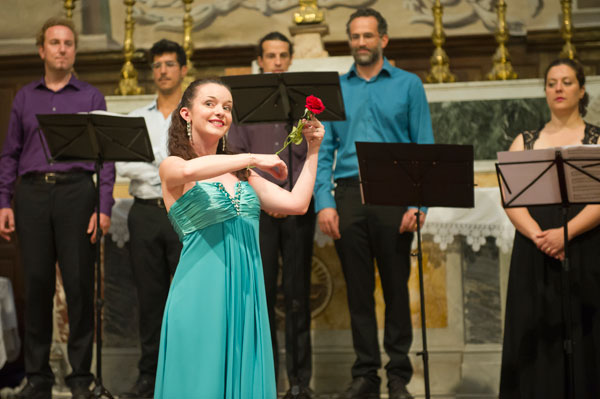
©YesICannes.com
Act 4: the seasons celebrate reconciliation
Titania finally wakes up. She’s tired of crazy dreams and wants to return to her love for Oberon. Everyone will celebrate this reconciliation, especially the four seasons. Soprano: “This is the spring of goodness, let’s pay tribute to him!” Alto: “Here’s the summer, alert and happy, frisky, lively and beautiful!” Tenor: “This is autumn, look at all the colorful fields!” Low: “Finally comes winter, slow pale, lean and old.” But still the bringer of jollity…

©YesICannes.com
Act 5: the characters of the fairy celebrate love
Everyone praises love. Juno is moved (soprano): “The lovers happy thrice times! O let me weep!” As we are in a fairy, the lament is followed by a burlesque dance of six monkeys!… All the characters of the dream wake up to dance. A women’s duo invokes Hymen, the god of marriage, who had fallen asleep during all this fantasy: “We will wake you, Hymen, appear!” Hymen wakes up (bass): “You see, I obey, I hate ephemeral loves that last only one night… What we need is eternal love!”

©YesICannes.com
Henry Purcell, King’s official musician
Henry Purcell (London, 1659 – London, 1695) is an English composer from the 17th century who, in about 800 works, has addressed all genres. To the English tradition, his work incorporates the French and Italian innovative advances. Son of a court musician, he was the king’s official musician. Endowed with an early talent for writing, he was named in 1667 “composer of the King’s Violins”. Until his death he was organist of the Westminster Abbey Chapel and wrote ceremonial odes and anthems for royal events to the king’s service. He also composed secular and religious music and works for the theater. The Fairy Queen was the greatest success of the composer during his lifetime.
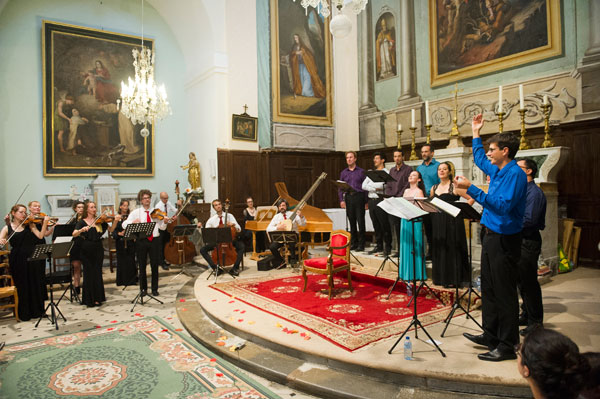
©YesICannes.com
Baroque heritage of the Principality
The Ensemble Baroque de Monaco is place under the direction of the conductor and counter-tenor Matthieu Peyrègne. Faithful to the Baroque history of the Principality, in memory of Prince Antoine 1st of Monaco, who reigned at the beginning of the 18th century, the Ensemble is defending the most beautiful pages of music from the XVII-XVIIIth century repertoire. His repertoire strives to recreate forgotten or unknown works that, by the hundreds, abound in the landscape of Baroque music. All the instrumentalists play on period instruments, tuned to historical tuning forks. Finalist of the International Sacred Song Contest in Rome in 2014, Matthieu Peyrègne first trained as a violinist at the Nice C.N.R. Matthieu Peyrègne regularly performs as a soloist during recitals, in the company of artists with an international career (Huguette Grémy-Chaulliac, Jean-Louis Charbonnier, Hervé Lamy, Fabrice di Falco).

©YesICannes.com
A first record praised by critics
Under the direction of Matthieu Peyrègne, the Ensemble Baroque de Monaco recorded its first CD, playing a work by Alessandro Scarlatti, The Assunzione della Beata Vergine. Named “CD event of the month of February 2019” by the specialized website www.classiquenews.com, the version of the Ensemble of the Assunzione della Beata Vergine was honored with “five diapasons” by Diapason, the French monthly magazine of Information and Music Critic.
www.ensemblebaroquedemonaco.com
The Ensemble Baroque de Monaco at Festival de Musique Ancienne de Callas in pictures
Click on pictures to enlarge – ©YesICannes.com – All rights reserved
- Bernard Chilini, Maire de Figanières
- Matthieu Peyrègne


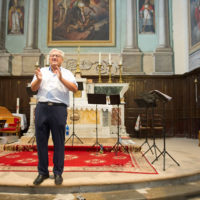
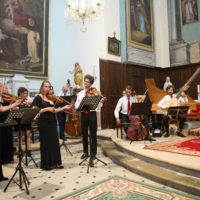
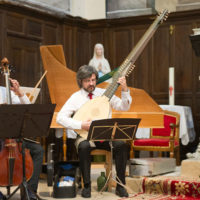
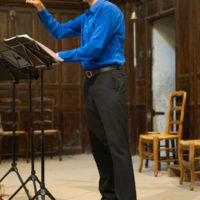
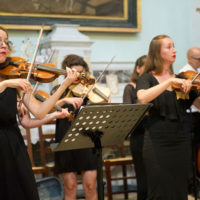
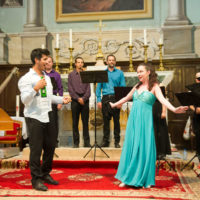
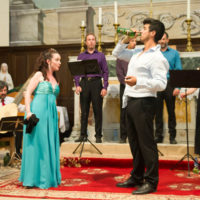
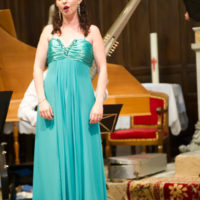
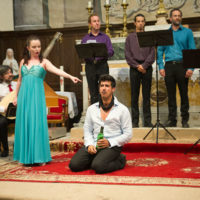
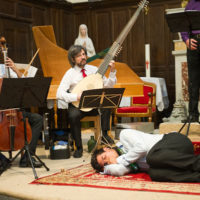
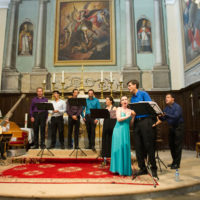
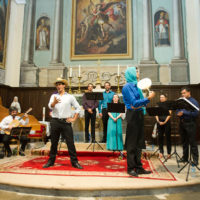
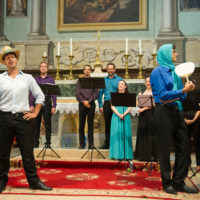
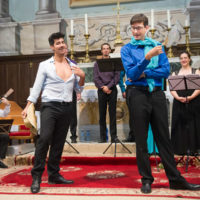
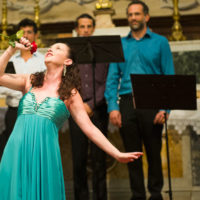
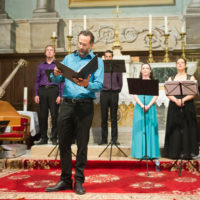
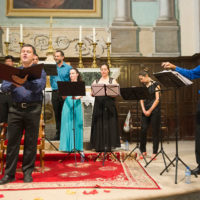

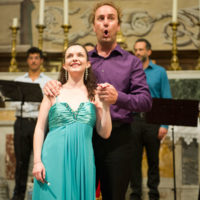
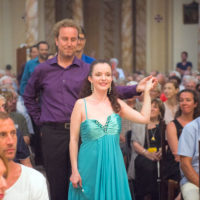
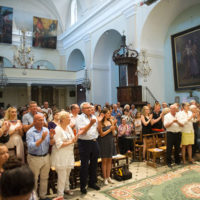
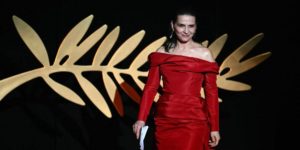

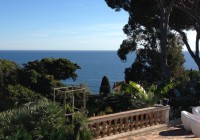
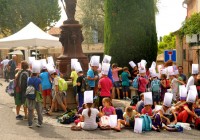
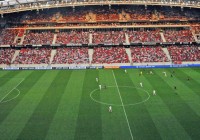

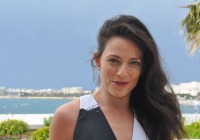
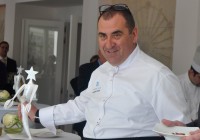
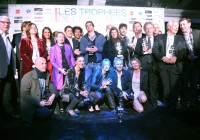


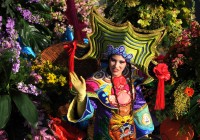

Recent Comments